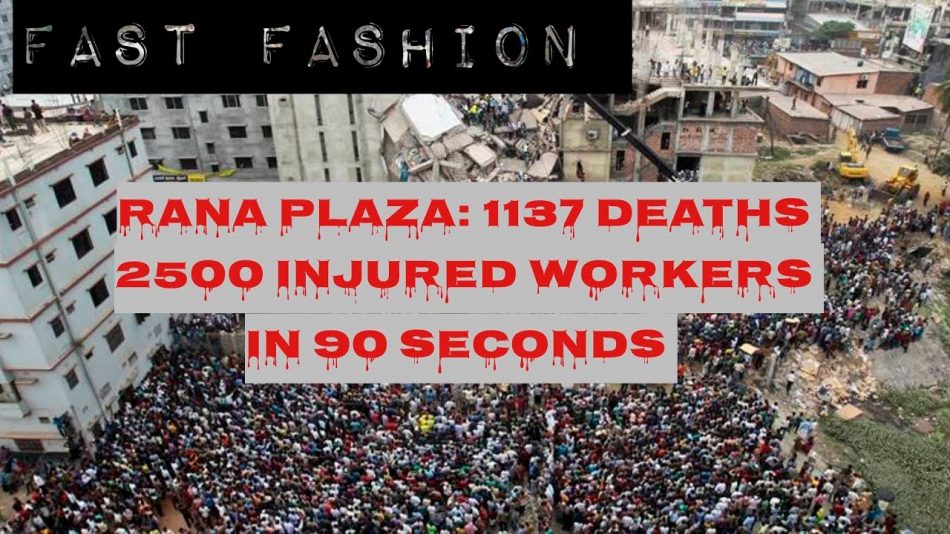
Page Description
Discover the Rana Plaza factory collapse in Bangladesh: its causes, impact on workers, and the reforms it prompted in the fashion industry.
The Bangladesh Rana Plaza fashion factory collapse was a tragic incident that occurred on April 24, 2013, in Savar, Bangladesh. The collapse of the Rana Plaza building, which housed several garment factories, resulted in one of the deadliest industrial disasters in modern history. Here are the key points:
Building Collapse: The Rana Plaza building, an eight-story commercial building, collapsed due to structural failure. The building had several garment factories operating inside, employing thousands of workers who produced clothing for major global brands.
High Casualty Count: The collapse resulted in a high casualty count, with at least 1,138 people killed and over 2,500 injured. Most of the victims were female garment workers, who were trapped in the rubble for days before being rescued.
Poor Working Conditions: The incident shed light on the poor working conditions and safety standards in the garment industry in Bangladesh. The workers were often subjected to long hours, low wages, and hazardous working conditions, including overcrowded buildings and lack of safety measures.
Global Attention: The Rana Plaza collapse received widespread international attention, leading to global outrage and calls for improved safety measures and working conditions in the garment industry. It brought attention to the issue of worker exploitation in the fashion supply chain and the need for greater accountability among fashion brands.
Legal and Ethical Implications: The incident raised legal and ethical implications, including questions of responsibility and accountability for the safety of workers in the fashion supply chain. Some fashion brands were criticized for failing to ensure adequate safety measures and working conditions in their supplier factories.
Reforms and Changes: The Rana Plaza collapse prompted reforms in Bangladesh’s garment industry, including improvements in building safety regulations, inspections, and worker rights. Some fashion brands also took steps to enhance supply chain transparency and implement stricter social and environmental standards.
Continued Challenges: Despite some improvements, challenges persist in the garment industry, including issues related to labor rights, workplace safety, and supply chain transparency. The Rana Plaza collapse serves as a reminder of the ongoing need for vigilance in addressing these challenges and protecting the rights and safety of garment workers.
1 Why Fair Trade is So Important
18 okt. 2017
2 Assignment Asia – Rana Plaza collapse: Lessons from a disaster
31 mei 2017
3 Betrayal in Bangladesh: The 2013 Dhaka Garment Factory Collapse
3 aug. 2021
4 Counting the Cost – Bangladesh: The cost of fashion
25 mei 2013
A building collapsed killing more than 1,000 garment workers in Bangladesh last month. The disaster showed the terrible working conditions, and lack of safety, for millions of workers there. Both Bangladesh and the global community are coming to terms with their roles in the disaster, because whether consumers shop at Walmart or at Giorgio Armani, the clothes they buy are probably produced in Bangladesh, which is ranks number two in the world for garment production. And that is because garment workers in Bangladesh are the lowest earners in the world. Workers expect to earn 24 cents an hour, with some wages as low as $38 a month – a lot lower than the rate in the world’s other big apparel producing markets. So, can Bangladesh make a change to a properly regulated garments industry? And what would this change mean for the industry? We discuss the options on Counting the Cost.
At Al Jazeera English, we focus on people and events that affect people’s lives. We bring topics to light that often go under-reported, listening to all sides of the story and giving a ‘voice to the voiceless.’
Reaching more than 270 million households in over 140 countries across the globe, our viewers trust Al Jazeera English to keep them informed, inspired, and entertained.
Our impartial, fact-based reporting wins worldwide praise and respect. It is our unique brand of journalism that the world has come to rely on.
We are reshaping global media and constantly working to strengthen our reputation as one of the world’s most respected news and current affairs channels.
5 Textile Factories in Bangladesh — The Transnational Production of Garment
13 dec. 2012
Rana Plaza – three years after
25 apr. 2016
6 Candid Camera Classic: Seeing Double!
FoyshaCollection
9 jaar geleden